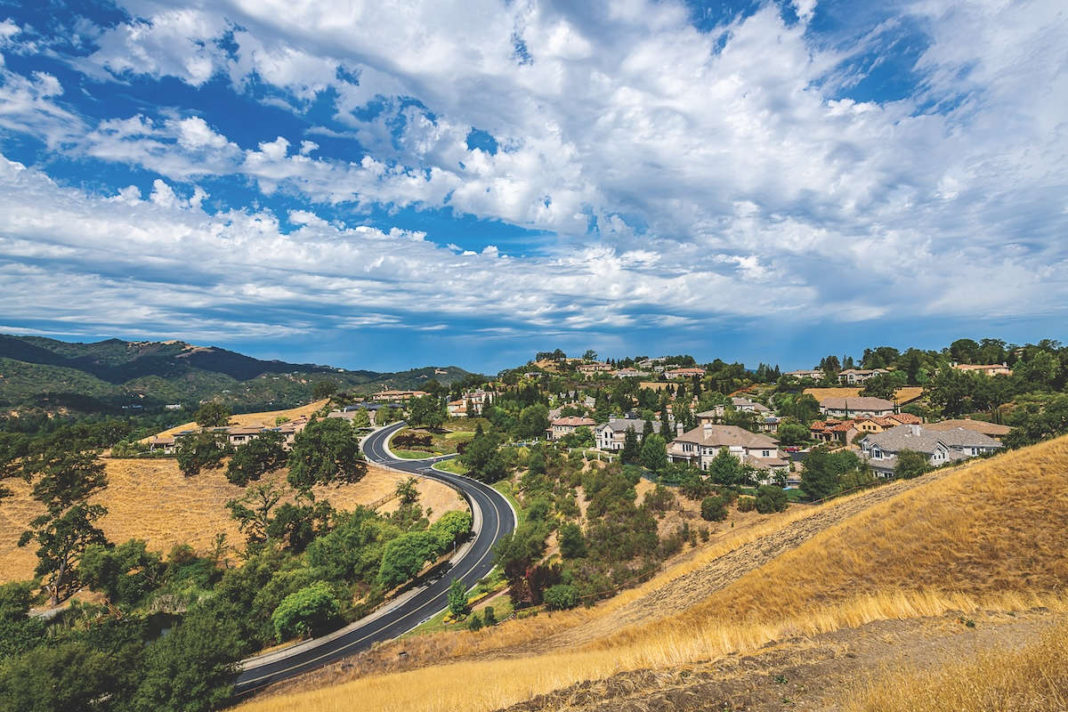On the afternoon of Oct, 19, 1991, Beth Keer hiked up Sonoma Mountain with a friend. After some time, the pair looked back and spotted a plume of smoke in Oakland’s direction. Frantic, they rushed down the mountain, and Keer’s friend, who lived in Oakland at the time, prepared for a potential evacuation. Fortunately, neither of their homes was demolished, but the two witnessed the aftermath of what was one of the most devastating wildfires in the Bay Area’s history.
“I said, ‘uh oh,’” Keer recalled. “It was pretty scary.”
Destroying 3,400 homes, the Oakland firestorm of 1991 is a harrowing memory for anyone who is old enough to recall it. Images of blowing ash and trees exploding on television still haunt survivors. What’s worse, the prevalence of fires like these is increasing by the year. According to Cal Fire, just over 4 million acres were scorched across the state in 2020, the most in history. With climate change, these numbers are projected to climb.
But the loss doesn’t stop at decimated communities. In response to the increased fire risk, insurance companies are abandoning their customers.
On March 20, California’s largest home insurer, State Farm, announced they would be making the decision to non-renew approximately 30,000 homeowner and rental policies in the state. With the expiry date on their coverage fast approaching, many State Farm policyholders are turning to the CA FAIR Plan: a private insurer that some consider a “last resort” due to a hefty cost.
“This decision was not made lightly and only after careful analysis of State Farm General’s financial health, which continues to be impacted by inflation, catastrophe exposure, reinsurance costs and the limitations of working within decades-old insurance regulations,” said Sevag Sarkissian, State Farm media specialist.
Insurance cancellations will take place on a rolling basis beginning on July 3, 2024, for homeowners, renters, business owners and residential community associations, and on Aug. 20 for commercial apartment policies.
This news comes as California has seen a number of record-breaking heat waves recently. The US Environmental Protection Act reports that climate change is hitting the already dry state hard: The days are getting hotter, snow is melting earlier and rainfall is decreasing. As of May 2024, the California Department of Forestry and Fire Protection recorded over 1,500 fires since the beginning of this year.
An interactive map depicts ZIP codes where policies will not be renewed, with the biggest share being 94563 in Contra Costa County that includes Orinda, Lafayette and Eastport. However, Bay Area residents outside of the listed ZIP codes still face looming insurance cancellations.
State Farm’s non-renewals are sending shock waves through a community in the Oakland Hills, the eastern part of the city that was devastated by the infamous fire of 1991. Keer, who moved to the area in 1995, recently discovered that her coverage is on the chopping block.
Like many residents, Keer was drawn to the hills’ idyllic parks and tranquility. But these perks came at a price. Due to invasive and highly flammable vegetation and debris, the state considers the hills as highly fire-prone.
“It’s a shame, we have these beautiful parks, but they’re high fire risk,” Keer said.
The fire threat in the Oakland Hills is much like any forested area, with dead trees and fallen branches being key risk culprits. But the situation in the hills is unique due to an abnormal abundance of non-native acacia and eucalyptus trees, the latter of which have oils in their leaves that make them particularly flammable. Keer frequents Joaquin Miller Park, one of the parks in the hills known for its breathtaking wooded trails. But she’s disappointed every time she goes and is reminded of the city’s negligence of the area.
“Our regional parks are dangerously overgrown and poorly maintained,” Keer said.
But the standards for residents in the area are much higher, especially if they want to remain insured. Before switching to State Farm, Keer was insured through USAA. Every year, USAA has conducted compliance inspections for homeowners, including guidelines to remove dead shrubs and leaves, clearing the roof and gutters, and keeping grass and weeds mowed.
Keer said she had been diligent about adhering to the guidelines, but that hasn’t always meant she’s in the “clear.” During one visit, Keer said an inspector canceled her insurance over “a little shrub,” marking only the beginning of her battle with fire insurance companies.
“I protested that so hard,” Keer said. “Eventually, I gave up and switched to State Farm.”
She had State Farm for the last 15 years and has now switched to the CA Fair Plan after being hit by the cancellation rollout. The plan markets itself as a “safety net,” providing coverage when other insurers step back. It acts as temporary insurance while residents seek a traditional, permanent plan.
Unfortunately, this backup option is costing homeowners like Keer up to double what they were paying previously. She currently pays $5350 per year for just fire insurance with the FAIR Plan, whereas before, with State Farm, she paid $3800, and that included all other types of homeowner’s insurance.
Some have taken to organizing to preserve and get their insurance back. Dawn Wheeler, a resident of the Piedmont Pines neighborhood in the Oakland Hills, is a member of the Piedmont Pines Neighborhood Association (PPNA), a neighborhood-wide volunteer group established in 1941 that works to keep the area fireproof by hosting fire-related seminars, town hall meetings and other educational events.
It’s an approach that’s been taken in Moraga, another high-altitude area with fire-prone neighborhoods. But even as they collectively try to educate each other on compliance standards, insurance companies update their policies often, so it’s difficult for even the most seasoned home hardeners to stay ahead of the curve.
“I think the goalpost absolutely moves,” Wheeler said.
As State Farm shows no signs of reversing these policy changes, the state of fire insurance in the Oakland Hills looks bleak. Like Keer, Wheeler is reluctantly looking into the pricey FAIR Plan as a last resort option. But as more Californians are turning to it, the system becomes more overwhelmed—a trend that could hurt the financial future of the FAIR Plan, says president Victoria Roach.
With primary and backup forms of fire insurance at risk, the people of the Oakland Hills can only look to their community for answers. District 4 council member Janani Ramachandran said her main focus is to work with the state to secure funding for a more robust Oakland Fire Department (OFD).
Currently, the department has 500 sworn personnel but has had to freeze some positions due to budget constraints. Ramachandran’s goal is to collaborate with OFD and secure funding to unfreeze the fire inspector and deputy captain roles.
“We’re hoping to collectively apply pressure,” Ramachandran said.
OFD Fire Marshal Felicia Bryant reiterated the importance of home hardening at a PPNA town hall meeting recently. She urged the neighborhood to stay up-to-date on protocols, reminding them that a repeat of 1991 is very feasible, and this time, insurance doesn’t have their backs.
“A fire can happen at any point,” Bryant said. “Make sure your home is ready.”













